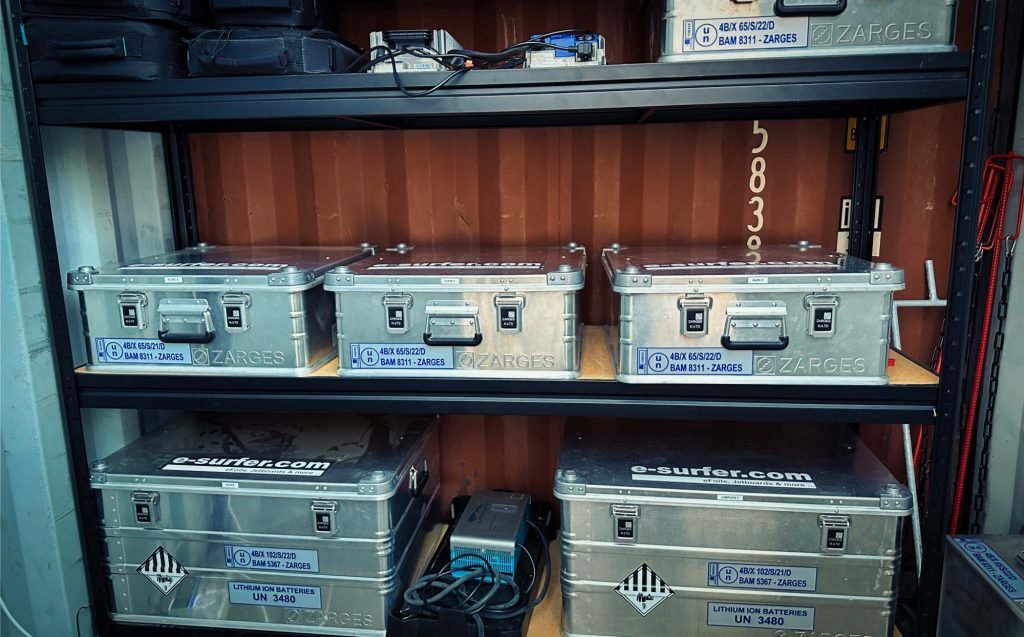The safe storage of lithium-ion batteries with a capacity of over 1000 kWh, as used in water toys such as eFoils and jetboards, is crucial to ensure safety and longevity.
I have already written two articles about lithium-ion batteries in the past. Here is an update with new features and a summary of the original articles. Especially those who store lithium-ion batteries from eFoils and jet surfboards in inhabited rooms as well as in boats or motorhomes should take this topic to heart.
Current recommendation
We have been experimenting with various solutions since 2017. More on this below. Our current solution is based on aluminum boxes from Zarges combined with fireproof Cirrux cushions. We use these Jetboard and eFoil battery boxes ourselves, as you can see in the picture above. The two large battery boxes at the bottom each contain a Jetboard battery. The smaller boxes at the top each contain an eFoil battery.
The boxes are available in our store:

Of course, we are also continuing to pursue the development of new solutions for the safe storage of lithium-ion batteries. At present, this solution seems to us to be the best in terms of safety, price and performance.
Water toy batteries on yachts
In the case of yachts, boat insurers are increasingly requiring fireproof boxes for water toys, eBikes and other lithium-ion batteries or otherwise refusing to pay benefits in the event of a claim.
Large underwater scooters such as the Seabob pose a particular problem due to their dimensions. So far, there are no fireproof battery boxes with sufficient volume for these water toys. The first suppliers are already working on this, but these boxes will be heavy and are not yet available.
For small submersible scooters such as the Scubajet or for eBike batteries, on the other hand, there are already solutions from Zarges.
Only one battery per box
These lithium-ion battery boxes are not cheap. That's why I'm often asked whether you can store several batteries in one box. I strongly advise against this for the following reasons:
- These fireproof boxes are only designed for a certain amount of energy. With two or more batteries, this would be exceeded.
- Should an incident really occur, the faulty battery would infect the other batteries.
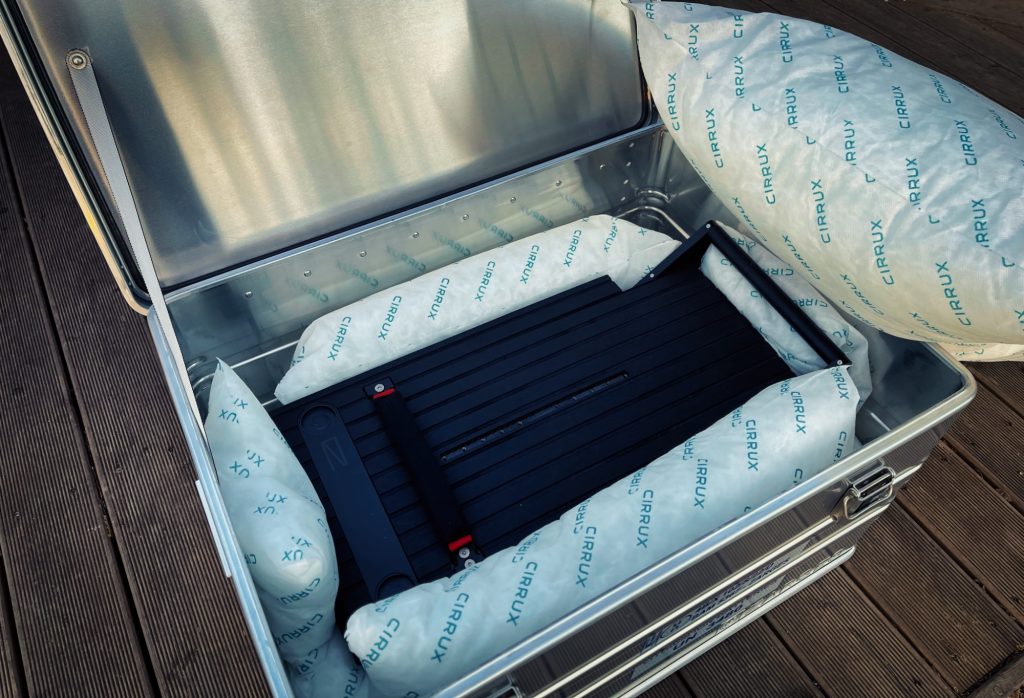
How safe are lithium-ion batteries?
Ever since smartphones smoked on airplanes and electric cars caught fire, it has been clear that this technology is not 100% safe. There is always a residual risk. We are surrounded by lithium-ion batteries every day. Smartphones, cordless screwdrivers, e-bikes, …, the list is very long.
The number of devices with lithium-ion batteries is therefore very large. The number of fires is proportionally very low. Nevertheless, they can happen.
For this reason, we only sell premium electric surfboards. The luxury manufacturers use the best cells, a lot of know-how and a sophisticated battery management system (BMS) to ensure maximum safety.
Jet board & eFoil batteries in particular contain a lot of energy (approx. 2 to 4 kWh) and also come into contact with water (especially salt water). Careful handling is therefore important. Never drop them. If this does happen, please contact the manufacturer's support immediately.
Charging lithium-ion batteries safely
Our current solution does not yet support charging lithium-ion batteries inside the box. It is therefore important to monitor the charging process. Ideally outdoors on a flat, dry surface.
Our fireproof box is also a very good base.
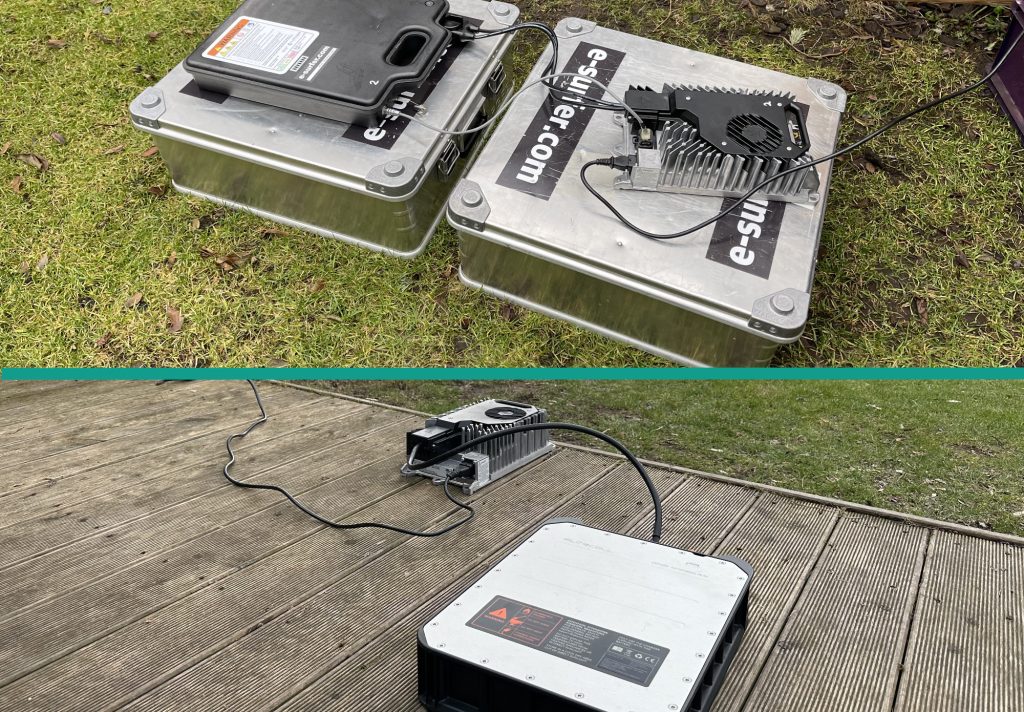
It is important that lithium-ion batteries are never charged below 10 degrees Celsius. This can damage the batteries. So if the batteries cool down too much in your winter storage facility, bring them indoors for a few hours before charging. We have a heater in our battery compartment that never lets the temperature drop below 10 degrees Celsius.
There were or are also solutions in which you can charge the batteries, but these are either not yet available, extremely expensive or no longer on the market. On the picture below you can see such a solution from the company Onean. Unfortunately, Onean is no longer on the market.
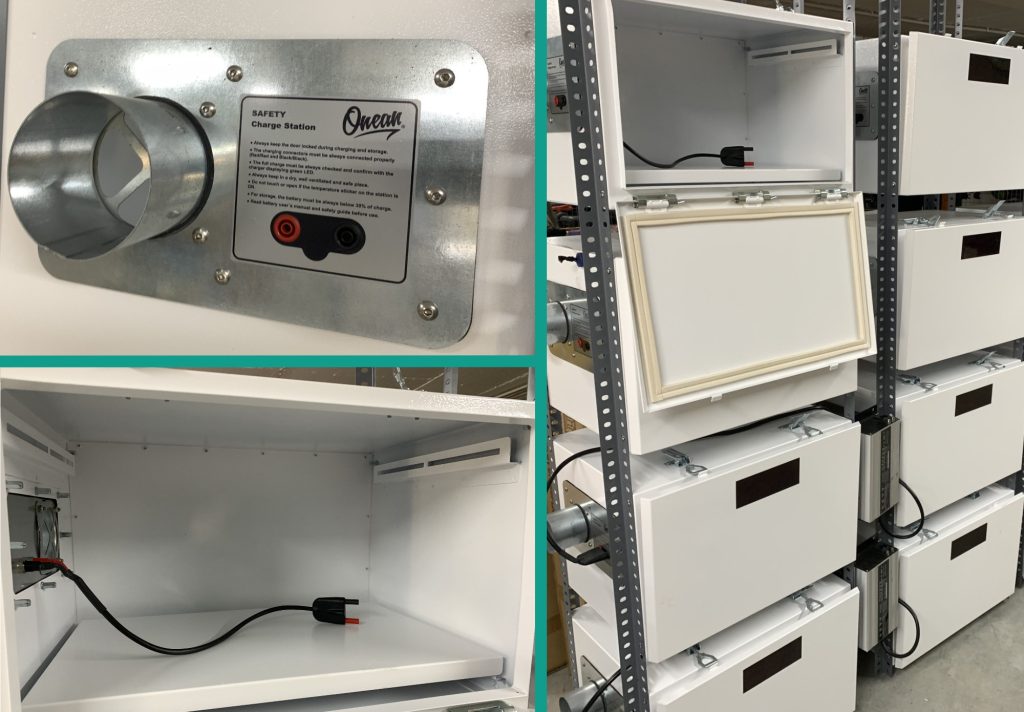
Lithium-ion batteries - the basics
Here are detailed steps and considerations you should follow to store your batteries safely.
1. understanding lithium-ion batteries
First, you should understand the characteristics of lithium-ion batteries. They offer high energy density and are therefore ideal for use in portable electronic devices, including water toys. However, their performance comes with risks, such as a tendency to overheat or even catch fire if they are damaged or mishandled.
2. basic storage conditions
- Temperature control: Extreme temperatures, both heat and cold, can damage lithium-ion batteries. Store them in a cool, stable environment (ideally between 10 °C and 25 °C). Avoid storing the batteries near heat sources or in direct sunlight.
- Dry environment: Moisture can lead to corrosion and internal damage. Store the batteries in a dry room to avoid moisture.
3. special considerations for high capacities
- Fire protection: Due to the high energy density, an effective fire protection system is essential. This may include automatic fire extinguishing systems, fire extinguishers and regular safety checks.
- Spatial separation: Do not store large batteries too close together. Ensure sufficient distance between units to minimize the risk of thermal runaway.
- Monitoring: Use technology to monitor the temperature and state of charge of the batteries. Sensors can help to detect and prevent problems at an early stage.
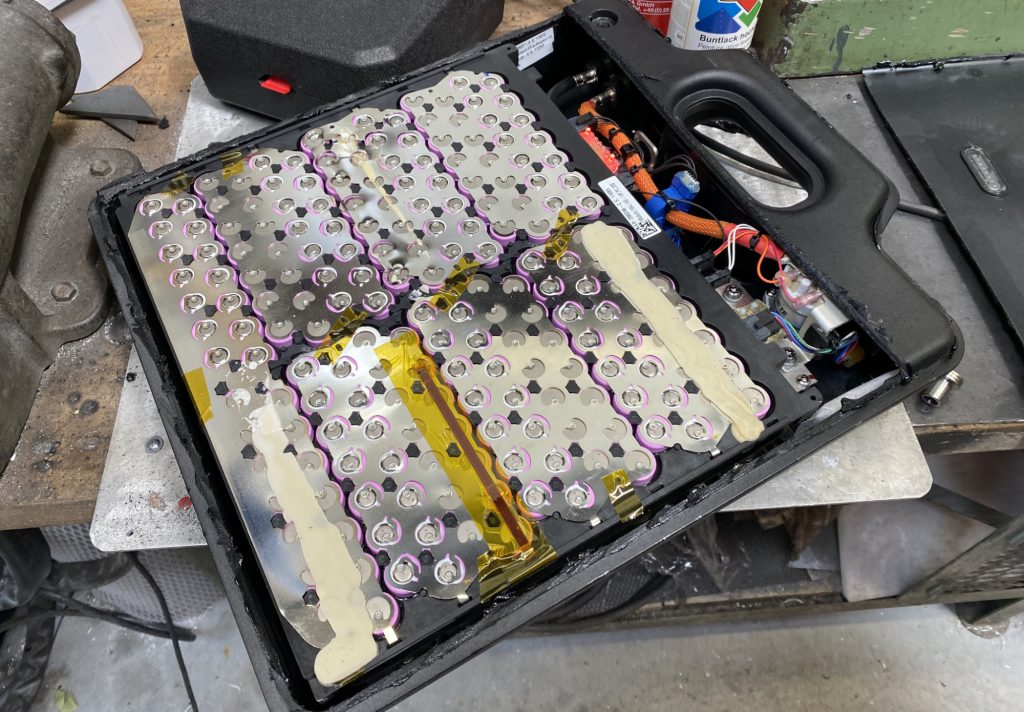
4. maintenance and regular inspection
- Visual inspection: Check regularly for signs of external damage such as cracks or bulges. Corrosion or leaks should also be addressed immediately.
- State of charge: Do not store batteries in a fully discharged state. A medium state of charge (about 40-50%) is ideal for storage as it minimizes the stress on the cells.
- Software updates: Keep the battery management system (BMS) up to date to benefit from the latest safety features and efficiency improvements.
5. Handling and transportation
- Proper handling: Avoid dropping or violently bumping the batteries as this can cause internal damage. When installing and removing, make sure that the connections are clean and undamaged.
- Transportation: If batteries need to be moved, use suitable containers and observe the applicable transportation regulations for lithium-ion batteries.
Conclusion
The storage of lithium-ion batteries, especially those with a high capacity for water toys, requires care and caution. By following the guidelines above, you can minimize the risk of accidents and maximize the life of your batteries. Remember that safety always comes first and don't hesitate to consult professionals if you are unsure or need further information. With the right approach, you can ensure that your batteries are stored safely and are ready when you need them.
Our experience
Back in 2021, I recorded the following video with my friend Mike from Jetsurfingnation for the E-SURFER Youtube channel on the topic of safe storage of lithium-ion batteries:
I have been working on this topic since 2017 and have spoken to many experts about it. As the phenomenon of lithium-ion batteries has only boomed in recent years, many safe solutions are still under development.
You can see my first attempts in the pictures below:
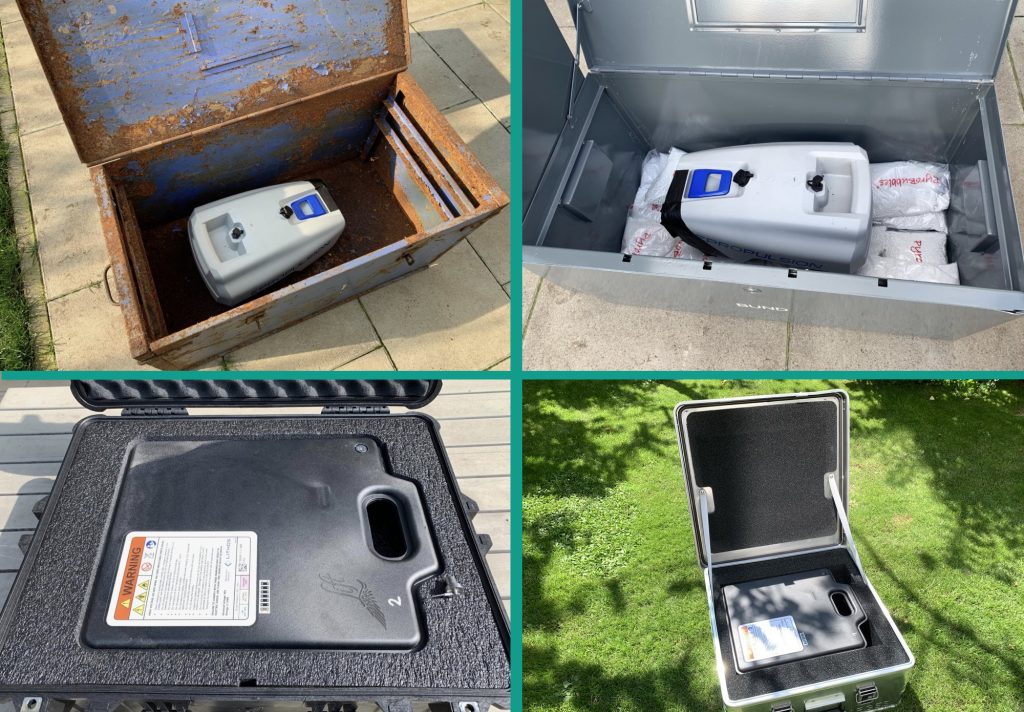
It all started with the blue steel box. Later, a better steel box with Pyro Bubbles. Unfortunately, these boxes were very heavy and the Pyro Bubbles bags were fragile and very dusty.
In the meantime, Lift Foils had brought out two battery boxes. First in a Peli Case and later in an aluminum box. These solutions protected the batteries from impact, but the Peli Case offered no fire protection at all and the aluminum box only a small amount. The filling was not fireproof.
Today, we still use the solutions that we also sell in the store. At EUR 1,000 or more, these are not cheap either, but safety comes first for us. More about our boxes here:

